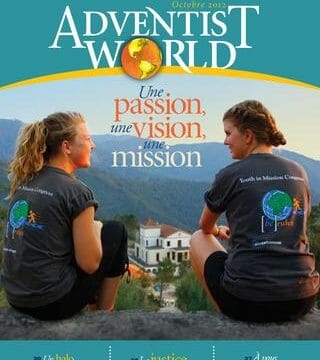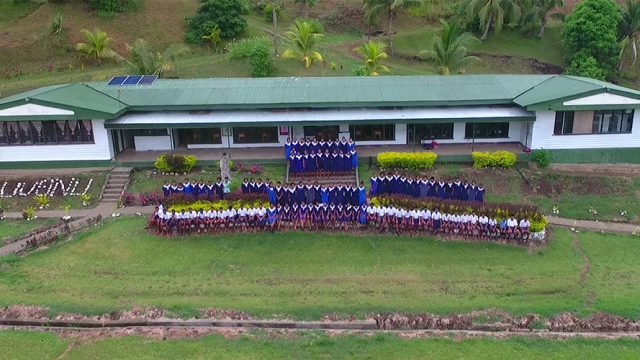Leaders encourage, empower missionaries in the Southern Asia-Pacific region.

The first-ever Global Mission Pioneers (GMPs) Convention, held August 21-26 in the Southern Asia-Pacific region (SSD) of the Seventh-day Adventist Church, brought together an assembly of dedicated laypeople, Adventist Mission directors, and global church leaders. Participants gathered at the Plagoo Holiday Hotel in Bali, Indonesia. Adopting the theme, “I Will Go… to See Him,” the event underscored the commitment of more than 130 pioneers who have been instrumental in spreading the gospel in some of the most challenging areas of the world, regional church leaders said.
GMPs are lay people and pastors who dedicate at least one year to establishing congregations in unentered areas within their own cultures. Their deep understanding of local customs, fluency in the language, and ability to seamlessly integrate into their communities give them a unique advantage in mission work. Since 1990, these pioneers have established more than 11,000 new Adventist congregations worldwide, making a significant impact in spreading the message of hope and salvation.
More than 2,500 GMPs are currently active around the world, sharing the good news through a holistic approach to ministry. This approach includes caring for the sick, teaching agricultural skills, running literacy programs, holding evangelistic meetings, and conducting Bible studies. Their work exemplifies the mission of the Adventist Church to reach every nation, tribe, language, and people, church leaders said.
In the SSD region, GMPs face significant challenges as all 11 countries in this territory fall within the 10/40 Window — a vast and challenging area where many people have yet to hear the gospel. This region is home to more than 686 million people, making the task of reaching them both daunting and critical.
SSD associate secretary and Adventist Mission director Joni de Oliveira welcomed all delegates from the Southeast Asian region and expressed his excitement to witness and hear their stories of mission in their respective fields.
“We aim to empower each delegate with the knowledge and resources they need to succeed in their mission work. That’s why we’ve brought together our leaders and frontline missionaries, who have remarkable experiences to share,” de Oliveira said. “We want to equip them with practical tools, proven examples, and inspiration drawn from real-life testimonies of those who have lived — and are living — successful mission journeys. Through these stories, we hope to ignite their passion and guide them toward even greater success in their own ministries.”
The convention served as a time of spiritual renewal and strategic planning for the pioneers, who engaged with Adventist Mission leaders and representatives from the General Conference (GC). Several speakers addressed the delegates, offering encouragement and valuable guidance as they continued their mission.
Gary Krause, GC associate secretary and Adventist Mission director, spoke about the significant challenges and opportunities in spreading the Adventist message in today’s world. He pointed out that out of every one million people, only 6,530 are Seventh-day Adventists, and in 49 cities with populations over one million, there are fewer than 10 Adventists. Even more strikingly, 43 of these cities have no Adventist presence at all. He highlighted the importance of cities as centers of influence in politics, entertainment, and the economy, emphasizing the need for a strong Adventist presence in these areas.
“We’re here because we are called on a special mission to share the love of Jesus. And church planting, starting new groups of believers, is the way that we move the mission of God forward,” Krause said. “And we must be constantly looking at those areas of the world, those people groups who have not yet heard the Adventist message… That’s the heart of what Adventist mission is all about, reaching them with a message of hope.”
Krause also introduced the idea of a “15-minute city,” where within 15 minutes by bicycle or bus, residents can access essential services like grocery stores, education, and medical care. He challenged us to imagine the impact if within 15 minutes, everyone in such a city had access to an Adventist group that could be a beacon of light and influence. Although the challenges are great, Krause reminded us that the mission is not just ours; it is God’s mission, as referenced in Matthew 24:14.
Khamsay Phetchareun, director of Global Missions at the GC Center for East Asian Religions, emphasized the importance of following Christ’s example by mingling with others to make friends for Jesus. He reminded delegates that many people feel lonely and long for connection. By using every opportunity to build friendships — whether through sharing a meal, attending funerals, or spending time with children — we can show the community that we care.
Phetchareun encouraged delegates to focus on being friends with everyone, no matter where we are or who we meet. He highlighted the need to connect with both adults and children, understanding that our genuine care and friendship can make a lasting impact. Mingling with others is not just a task but a mission to bring them closer to Jesus.
GC leaders explained what the Global Mission Centers are in the Adventist Church. These centers are special places designed to support the church’s mission, especially in reaching people who have not yet heard the Adventist message.
Kleyton Feitosa, director of GC Global Mission Centers of Influence, emphasized how important it is for GMPs to connect with these centers. By doing so, they can receive mentorship and materials that help them in their work. “These resources are key for pioneers to be more effective in sharing the Adventist faith and expanding the church’s mission around the world,” he said.
The original version of this story was posted on the Southern Asia-Pacific Division news site.








